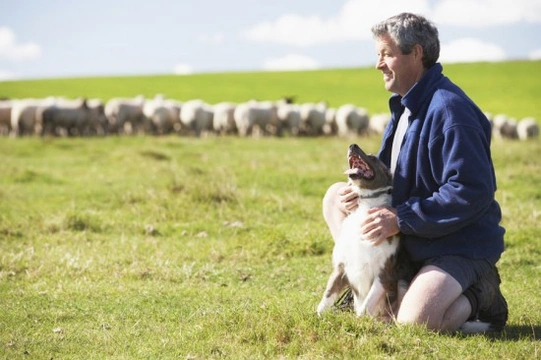
Training a Sheepdog
A sheepdog is indispensable to a farm and without one it can take numerous people to herd the sheep. There are many breeds of herding dogs, but certainly one of the most popular is the border collie, famed for its intelligence and ability to respond to numerous commands. Training a border collie to herd sheep requires patience and persistence, but once achieved you will be left with a very happy working dog. A couple of sheepdogs can work together to herd large flocks of sheep, whilst owners of small holdings with only a few sheep may wish to train their pet border collie simply as a means to enhance it's life. Border collies are bred to herd and therefore there is nothing that makes them happier than having the chance to exhibit this behaviour.
Basic Training
Basic training should begin when your puppy is only a few months old. Basic training includes house training and obedience training, however your dog may not be ready to start learning to herd until it is one year old. You must gauge whether your puppy is ready to begin learning to herd by how much interest it shows in learning. The puppy may not be able to concentrate long enough to really learn anything until it is a little older. House training and obedience training are quite different from teaching a dog to herd and you should read the other articles on petsforhomes on these subjects. Once you have mastered the basic training it is time to move on to the subject of herding, which can be very complicated and time consuming. It is actually worth considering buying or borrowing books and dvds on how to train a sheepdog.
Introducing a Sheepdog to Sheep
A border collie's instinct will be to chase the sheep when introduced to them – after all that is what he has been bred for! This is a good thing and it is important that the dog is not punished for this behaviour as it is ultimately want you want them to do. Some dogs may be aggressive towards the sheep and attempt to bite them. If a dog grips or bites a sheep it is important that the behaviour is stopped by saying a firm “no”. If the dog is actually attacking a sheep then it must obviously be dragged away, although it is important to stay calm in these situations because any agitation from a handler will only make the dog worse. Using a long lead when first introducing a sheepdog to the sheep is a good idea. When the dog is in the field with the sheep the first command you should give the dog is “lie down” and then “that'll do” or whatever command is used to recall. Allow the dog to run around after the sheep for a while and every so often say “lie down” and immediately after “come-bye” or “go on” to allow the dog to continue chasing. The dog must learn not to associate commands such as “lie down” as “the fun stops” which is why you should start off by making him lie down for a few seconds and then to continue chasing. This is how you should continue for a good few training attempts to allow the dog to get used to the sheep and to the “lie down” command. There are many sheepdog commands to teach a dog listed below:
- Come Bye – Go to the left of the stock
- Away to Me – Go to the right of the stock
- Stand – Stop
- Lie Down – Stop and lie down
- Steady – Slow down
- Cast – Gather the stock into a group
- Find – Search for the stock
- Get Out – Get away from the stock
- Hold – Keep the stock in the position they are in
- Bark – Bark at the stock
- Look Back – Return for a stray animal that the dog has missed
- Walk Up – Get closer to the stock
- That'll do – Come back
As you can see there is a lot of commands and skills for the dog to learn and it may be that you will need the assistance of an expert sheepdog handler. The easiest commands to teach the dog are lie down, that'll do and stand, which are the most important and the ones that should be taught first. If your dog responds to each of these commands immediately then it is aware the you are in charge. You must gain complete control of the dog when it is in with the sheep before moving on to more complicated commands.To teach the dog “come bye” and “away” you must point in the direction you want the dog to go and say the command. Continue to do this until the dog understands which way it should go without the need to point.Remember that when a dog is introduced to sheep it is likely to be very excitable and may scare the sheep quite badly especially if it is biting and running out of control. Using a lead at first is helpful, but also be very strong and vocal with the dog if it is getting out of hand by using the “lie down” command. Not every single border collie will necessarily make a good working dog, and if you are finding it impossible to make anything out of a dog then it is important to gain expert advice to determine whether it is your handling that is poor or if the dog will not be a good worker.



